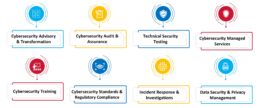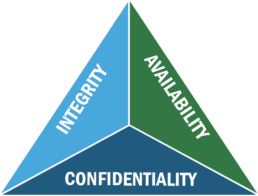Regulatory compliance and cybersecurity enhancement are two distinct pillars that demand specialized attention. While compliance efforts set up a baseline defence, they do not create an impregnable fortress against threats.
How can organizations transition from a “tick-box” mentality to a culture of continuous cyber improvement? This question is fundamental for enhancing cyber resilience. For those navigating a patchwork of regulatory environments, it is essential to comprehensively understand continuous and real-time security practices.
[FREE E-BOOK] The Definite Blueprint for Cybersecurity in Manufacturing
Compliance does not equal security. One of the most significant misconceptions in cybersecurity is the belief that meeting regulatory requirements automatically ensures comprehensive security.
However, it is crucial to perceive security compliance as a safety drill: it confirms that you have an evacuation plan, but it does not prevent fires. While regulations like the FTC’s “Safeguards Rule” and the PCI standards are designed to enhance information security, they represent the minimum level cybersecurity teams should strive for, not the maximum.
Furthermore, the escalating complexity of the cybersecurity regulatory landscape adds to the precariousness of a compliance-based approach. Annual or periodic audits can strain a company’s resources significantly. Once the audit is completed, a sense of complacency often sets in, leading to new vulnerabilities being left unaddressed until the next audit cycle commences. Unfortunately, this approach opens the door to security vulnerabilities that cyber adversaries can swiftly exploit.

CISOs bear the responsibility of transforming this deeply ingrained and flawed process. To transcend the “tick-box” mentality, cultivating a culture that prioritizes continuous improvement of cybersecurity defences and practices is essential, going beyond merely passing periodic audits. This shift will establish the foundation for a robust and adaptable security posture.
Therefore, the central question is: how can organizations initiate the establishment of a culture of continuous cyber improvement? The first step lies in emphasizing real-time security practices.
Real-time vs periodic security practices
An effective vulnerability management strategy relies on the synergy between real-time and periodic security practices. Each type of practice offers unique benefits, making it crucial for a comprehensive cyber defence approach to integrate both seamlessly.
In a world where threats emerge and evolve rapidly, real-time security practices are of utmost importance. Continuous processes such as endpoint detection and vulnerability detection play a crucial role. They act as a constant pulse on the network, alerting organizations to emerging hazards. Recent ransomware attacks have demonstrated that vulnerabilities can be exploited within hours or sometimes even less. An efficient real-time security system offers a critical window to detect and address vulnerabilities before they are exploited.
Periodic security practices, such as penetration testing, provide an opportunity to stress-test the system and identify potential vulnerabilities. However, it’s important not to overstate their significance. Pen tests are not routine tools; instead, they resemble performance evaluations. While they demonstrate that there might be a problem, it is continuous security monitoring that plays a more critical role in alerting you to the problem in the first place.
Some CISOs mistakenly view penetration testing as a panacea for their cybersecurity challenges and overly rely on it. While pen tests are undoubtedly valuable, they are not intended to offer real-time information on the daily threats an organization faces. Continuous security monitoring serves a different purpose, providing timely insights into the ongoing threats encountered by the organization.
Striking a balance is essential. CISOs must effectively balance real-time and periodic activities, such as network traffic monitoring, threat hunting, and vulnerability detection, with pen testing, risk assessments, and audits. This strategic approach ensures comprehensive protection by harnessing the strengths of each practice to create an interlocking, resilient cyber defence. The ultimate goal is to build a security system that excels in the face of actual threats, not solely during assessments.

Real-time vulnerability management is urgent.
To foster a culture of cyber improvement, businesses must adopt an effective vulnerability management strategy centred around continuously evaluating potential threat exposure and implementing proactive measures to counteract them. This process requires a sophisticated blend of data collection, threat intelligence, risk assessment, and swift response capabilities.
A robust strategy for real-time vulnerability management relies on continuous surveillance. Organizations can collect and analyze security data across their networks by leveraging security information and event management (SIEM) systems and endpoint detection and response (EDR) platforms. These tools are designed to identify abnormal patterns or behaviours that may signal a potential security breach. Together, they establish the foundation for a reactive approach to cyber threats, enabling organizations to respond swiftly whenever a threat is detected.
Complementing these systems is the utilization of threat intelligence feeds, which furnish information about the latest known threats and exploits. Integrating threat intelligence with SIEM and EDR tools enhances their effectiveness, enabling faster and more precise threat detection. This integration empowers organizations to stay on top of emerging threats and respond proactively to potential security risks.
After identifying threats, organizations must conduct risk assessments to prioritize their response. The potential impact of each vulnerability should guide the allocation of resources. The Common Vulnerability Scoring System (CVSS) offers a standardized method for evaluating the severity of vulnerabilities. This allows organizations to focus on remediating high-risk vulnerabilities, thereby reducing their overall cyber risk exposure. Organizations can optimize their security efforts and fortify their defence against the most critical threats by effectively prioritizing their efforts.
Beyond CVSS, organizations must establish processes for swift vulnerability response and remediation. This may involve implementing patch management systems to quickly deploy updates or establishing incident response teams to handle more sophisticated threats.
A culture of continuous cyber enhancement demands a substantial investment in these advanced technical capabilities. It calls for a departure from traditional, compliance-centric mindsets. It encourages a proactive approach that prioritizes real-time threat detection and response as the core of an organization’s cyber strategy. Embracing this proactive stance ensures that an organization is better equipped to swiftly identify and thwart emerging threats, leading to heightened cybersecurity readiness and resilience in the face of evolving challenges.
MANAGED CYBERSECURITY SOLUTIONS
Rhyno delivers a range of activities that combine to fully protect your infrastructure and data from cybercriminals, anywhere and everywhere, 24/7/365.
About Rhyno Cybersecurity Services
Rhyno Cybersecurity is a Canadian-based company focusing on 24/7 Managed Detection and Response, Penetration Testing, Enterprise Cloud, and Cybersecurity Solutions for small and midsize businesses.
Our products and services are robust, innovative, and cost-effective. Underpinned by our 24x7x365 Security Operations Centre (SOC), our experts ensure you have access to cybersecurity expertise when you need it the most.